The Intel SSD 320 Review: 25nm G3 is Finally Here
by Anand Lal Shimpi on March 28, 2011 11:08 AM EST- Posted in
- IT Computing
- Storage
- SSDs
- Intel
- Intel SSD 320
It's called the Intel SSD 320, but the part number should give away just what we're looking at here:
This is the long awaited third generation Intel based SSD. This is the G3. And at this point it's around 6 months late.
Back then it was simply called the Postville Refresh on Intel's roadmaps (Postville was the 34nm Intel X25-M G2). It would use 25nm Intel NAND, feature improved performance and full disk encryption - all behind a 3Gbps SATA interface.
When I spoke with Intel about the drive last year, all indications pointed to it being faster than drives based on SandForce's SF-1200 controller. And it is:
| Intel SSD 320 300GB vs. Corsair Force F120 | ||||
| AT Storage Bench 2011 (Heavy) | AT Storage Bench 2011 (Light) | |||
| Corsair Force F120 | 120.1 MB/s | 155.9 MB/s | ||
| Intel SSD 320 300GB | 132.8 MB/s | 161.7 MB/s | ||
Without turning to any real time compression/deduplication techniques, Intel has built a drive that's faster than the SF-1200. You also get that famed Intel SSD reliability:
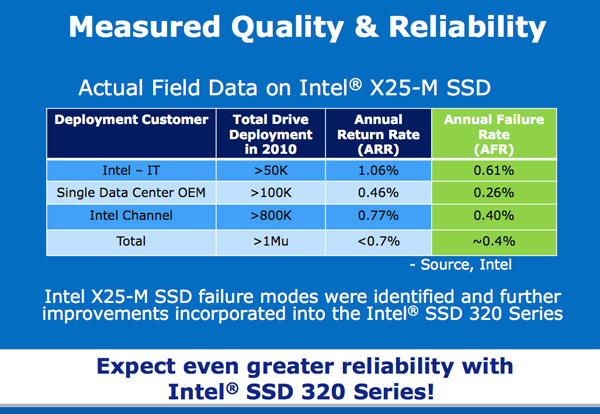
There's just one issue. The SF-1200 was the king of 2010. This year is shaping up to be all about the SF-2200 and the G3 isn't quite as competitive there. Intel realized this as well and thus we got the Intel SSD 510 to address the high performance market. Intel claims the 510 should have the same failure rate as the 34nm X25-M G2 at ~0.6% per year.
The Intel SSD 320 by comparison is aimed at the mainstream market. Remember that's what the M in X25-M always stood for to begin with. As a result we get lower pricing:
| Intel SSD Comparison | ||||||||||||
| X25-M G2 160GB | Intel SSD 320 40GB | Intel SSD 320 80GB | Intel SSD 320 120GB | Intel SSD 320 160GB | Intel SSD 320 300GB | Intel SSD 320 600GB | SSD 510 120GB | SSD 510 250GB | ||||
| User Capacity | 149GB | 37GB | 74GB | 111GB | 149GB | 279GB | 558GB | 111GB | 232GB | |||
| Random Read Performance | Up to 35K IOPS | Up to 30K IOPS | Up to 38K IOPS | Up to 38K IOPS | Up to 39K IOPS | Up to 39.5K IOPS | Up to 39.5K IOPS | Up to 20K IOPS | Up to 20K IOPS | |||
| Random Write Performance | Up to 8.6K IOPS | Up to 3.7K IOPS | Up to 10K IOPS | Up to 14K IOPS | Up to 21K IOPS | Up to 23K IOPS | Up to 23K IOPS | Up to 8K IOPS | Up to 8K IOPS | |||
| Sequential Read Performance | Up to 250MB/s | Up to 200MB/s | Up to 270MB/s | Up to 400MB/s (6Gbps) | Up to 500MB/s (6Gbps) | |||||||
| Sequential Write Performance | Up to 100MB/s | Up to 45MB/s | Up to 90MB/s | Up to 130MB/s | Up to 165MB/s | Up to 205MB/s | Up to 220MB/s | Up to 210MB/s (6Gbps) | Up to 315MB/s (6Gbps) | |||
| Price | $404 | $89 | $159 | $209 | $289 | $529 | $1069 | $284 | $584 | |||
It's still early in the 25nm ramp, but the 25nm Intel SSD 320 is cheaper than the 34nm Intel SSD 510. The only issue is that OCZ is very competitive with its pricing as well and compared to the Vertex 2, Intel's SSD 320 isn't really any cheaper. Intel likes to maintain its 65% profit margins so even though it makes the NAND and the controller in the 320, we're unlikely to see these drives drop below competitive pricing.
Intel expects the 25nm SSD 320 to be even more reliable than the 510 or X25-M.
The Same Controller
The Intel SSD 320, like the 310 and X25-M before it, uses an Intel branded controller. Opening up the 320 reveals a near identical controller to what we saw in the 34nm X25-M G2 housing:
You'll notice the part number is identical to 2009's X25-M G2 controller. In fact, it's the same controller. Apparently the G2 controller had a number of features on-die, but not implemented in firmware. Things like full disk encryption and NAND redundancy never made it out in G2 but are here in the 320 all thanks to new firmware. And no, G2 owners aren't getting it.
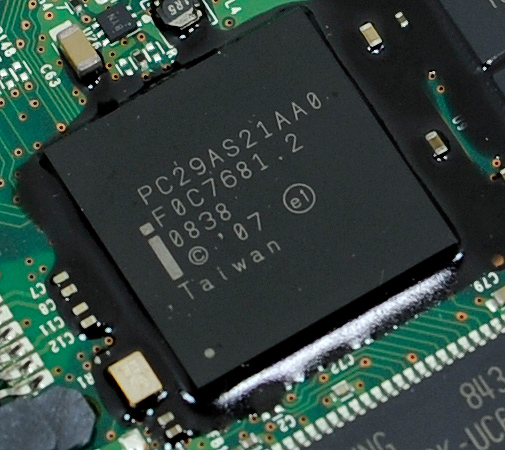
Intel's X25-M G1 Controller
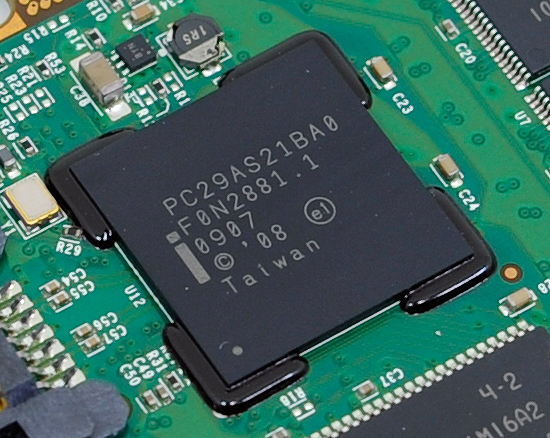
Intel's X25-M G2 Controller
Since the controller hasn't changed, the basic architecture of the SSD hasn't changed either. Intel still doesn't store any user data in its external DRAM cache and there's still a 256KB on-die SRAM.
Next to the Intel controller is a 64MB 166MHz SDRAM device, now made by Hynix. You'll notice that the DRAM chip is a lot smaller than what we've seen in previous X25-M generations, despite growing in capacity. Intel actually turned to mobile SDRAM for use in the SSD 320 to help save on power. While the X25-M G1 and G2 both used a conventional 3.3V SDRAM device, Intel moved to a 1.8V mobile SDRAM chip with the 320.
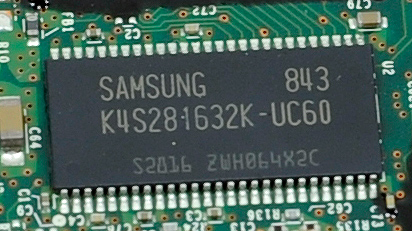
Intel X25-M G1: 16MB 166MHz SDRAM
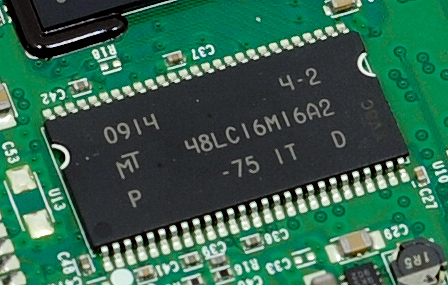
Intel X25-M G2: 32MB 133MHz SDRAM
Intel always prided itself on not storing any user data in its DRAM cache. The external DRAM is only used to cache mapping tables and serve as the controller's scratchpad. In the event of a sudden loss of power, Intel only has to commit whatever data it has in its SRAM to NAND. To minimize the amount of data loss in the event of a sudden power failure, Intel outfitted the SSD 320 with an array of six 470µF capacitors in parallel.
We've seen large capacitors on SSDs before, primarily the enterprise SandForce drives that boast a 0.09F supercap. Intel claims that for its design a single large capacitor isn't necessary given the minimal amount of data that's cached. It further claims that an array of multiple capacitors in parallel allows for much better reliability - if one capacitor fails the array is still useful (vs. a single point of failure in the case of the supercap).



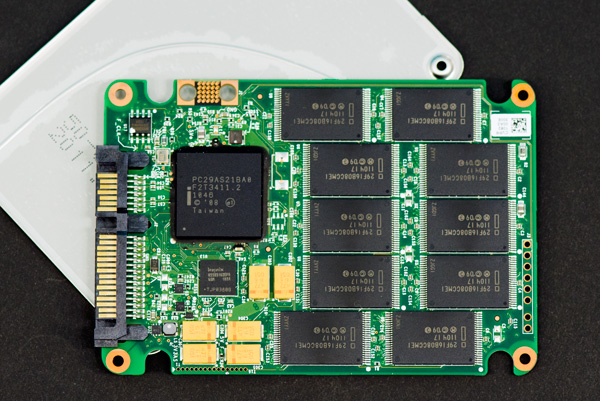
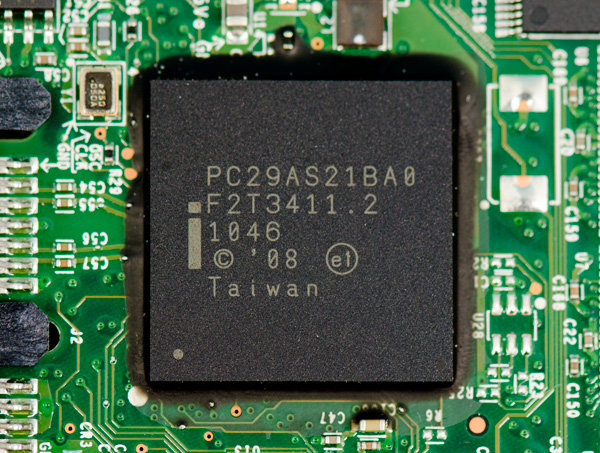
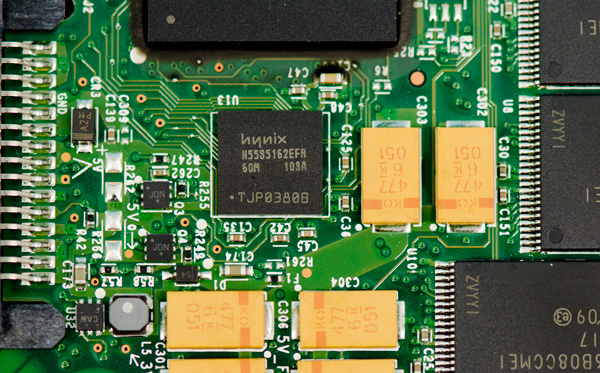









194 Comments
View All Comments
B3an - Monday, March 28, 2011 - link
lol @ this SSD.But most of all lol @ the price for this performance.
wumpus - Tuesday, March 29, 2011 - link
Somehow they sell chips that perform at levels AMD meets, as well as the high end. Both get large intel mark ups. Lol at the customers.Cow86 - Monday, March 28, 2011 - link
Have to agree here, I was looking forward to this drive to be decent performance at a low price....Performance is a bit less than I hoped for though, and the pricing is actually the same or higher than last gen. I'm looking to purchase an SSD in a few months (based on bulldozer, so somewhere late june probably) for a full rebuild of my pc, and I'll look at the pricing landscape then, but so far am dissapointed at the pricing of this entire new generation....wasn't 25 nm supposed to lower prices?As a sidenote, I couldn't help but take note of Crucial M4 results in the graphs here (which frankly, whilst doing great in write performance, seem a bit of a letdown in read performance compared to the C300?). Have I missed a review of that here, or is that inbound and have the results simply already been included in this review?
semo - Monday, March 28, 2011 - link
25nm nodes are more prone to errors and have a lower lifespan. This, and possibly other limitation, have necessitated workarounds that eat in to the savings due to smaller size (more reserve space, more ECC).Japan's natural disasters have also impacted global supply of flash (which hasn't been able to meet demand for a while now anyway)
ArteTetra - Monday, March 28, 2011 - link
I don't think this chips come from Japan. I think they are made in Lehi, Utah, USA.Furthermore, look at the date on those chips. It says 2008 and 2009, not 2011.
vol7ron - Monday, March 28, 2011 - link
I think Intel was using Samsung memory though. I'm not sure if these are manufactured in South Korea, or if Samsung has a plant in Japan.Griswold - Tuesday, March 29, 2011 - link
No. Do you pull that crap out of your ass before posting it?dagamer34 - Monday, March 28, 2011 - link
Sure, 25nm was supposed to lower prices, but all it demonstrates was that Intel was charging more for its drive previously anyway.Just looking at benchmarks, the OCZ Vertex 3 is gonna be the drive to beat, though it still isn't shipping to any retailers for sale yet.
Gami - Monday, March 28, 2011 - link
there's nothing to beat, if you're not ont he market for sale.Anand Lal Shimpi - Monday, March 28, 2011 - link
The m4 arrived while I was at CTIA last week so I just had enough time to run it through our suite. A full review of it and much more is coming soon :)